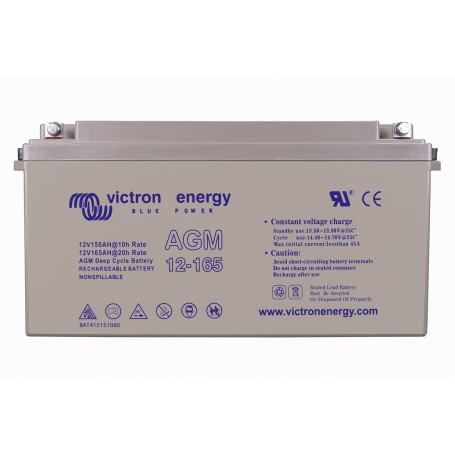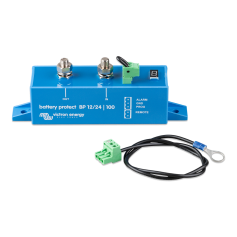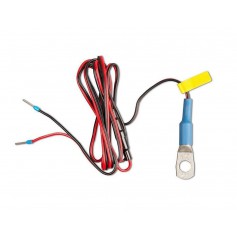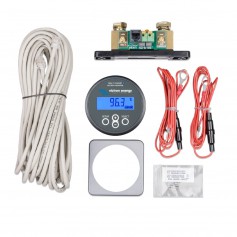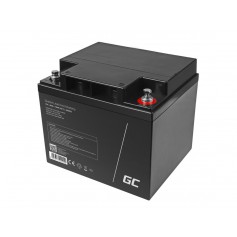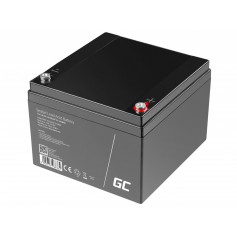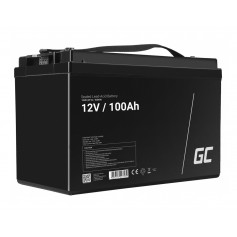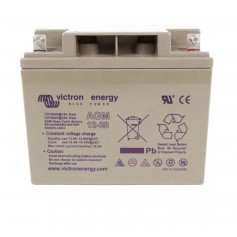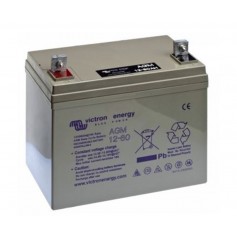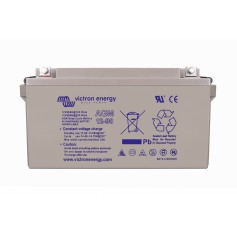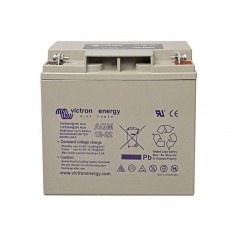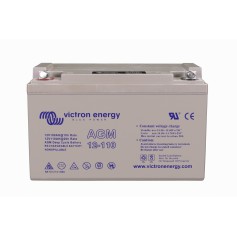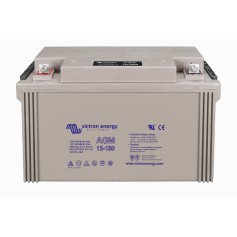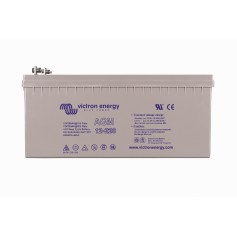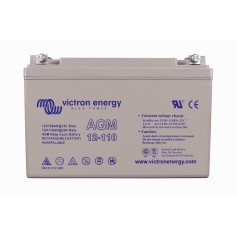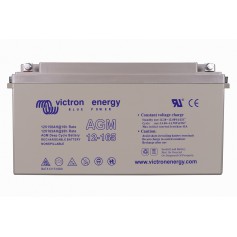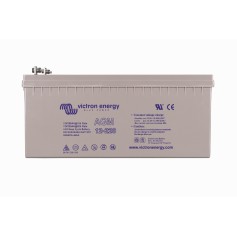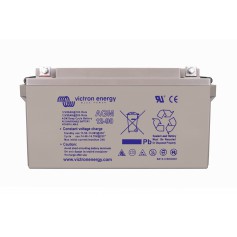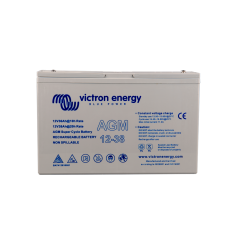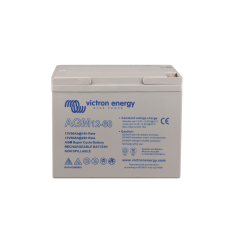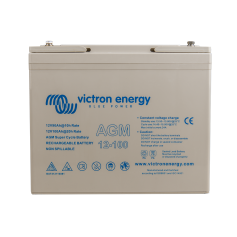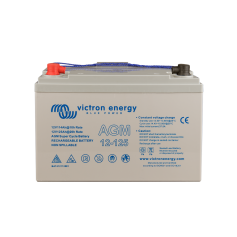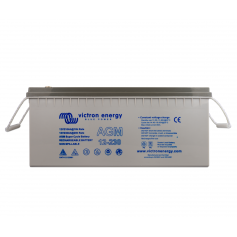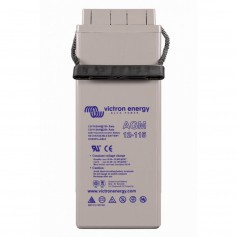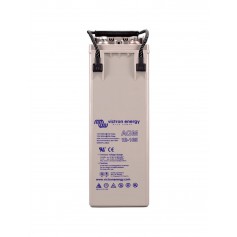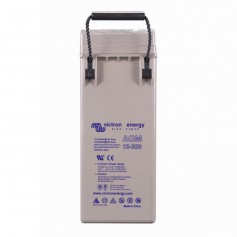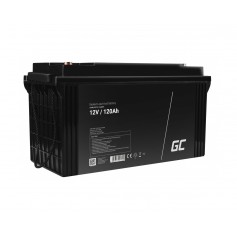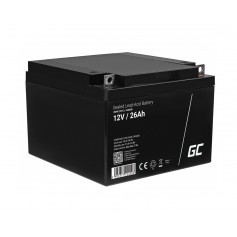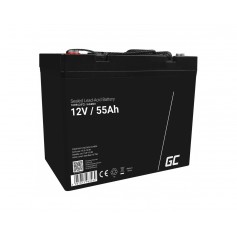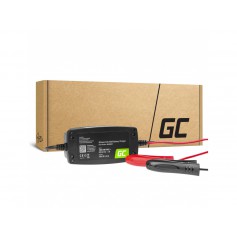No products
Download
Data sheet
| Type | Rechargeable |
| Style | Victron 12V AGM Deep Cycle |
| Manufacturing number | BAT412151084 |
| Target platform | Lead-acid batteries |
| Compositions | AGM (Sealed Lead Acid) |
| Voltage | 12V |
| Wattage | Does not apply |
| Capacity | 165Ah |
| Characteristics | M8 Bolt |
| Made in | China |
| Product warranty | 1 year |
More info
Victron GEL and AGM Batteries
1. VRLA technology
VRLA stands for Valve Regulated Lead Acid, which means that the batteries are sealed. Gas will escape through the safety valves only in case of overcharging or cell failure.
VRLA batteries are maintenance free for life.
2. Sealed (VRLA) AGM Batteries
AGM stands for Absorbent Glass Mat. In these batteries the electrolyte is absorbed into a glass-fibre mat between the plates by capillary action. As explained in our book ‘Energy Unlimited’, AGM batteries are more suitable for short-time delivery of high currents than gel batteries.
3. Sealed (VRLA) Gel Batteries
Here the electrolyte is immobilized as gel. Gel batteries in general have a longer service life and better cycle capacity than AGM batteries.
4. Low Self-Discharge
Because of the use of lead calcium grids and high purity materials, Victron VRLA batteries can be stored during long periods of time without recharge. The rate of self-discharge is less than 2% per month at 20°C. The self-discharge doubles for every increase in temperature by 10°C.
Victron VRLA batteries can therefore be stored for up to a year without recharging, if kept under cool conditions.
5. Exceptional Deep Discharge Recovery
Victron VRLA batteries have exceptional discharge recovery, even after deep or prolonged discharge.
Nevertheless repeatedly deep and prolonged discharge has a very negative effect on the service life of all lead acid batteries, Victron batteries are no exception.
6. Battery Discharging Characteristics
The rated capacity of Victron AGM and Gel Deep Cycle batteries refers to 20 hour discharge, in other words: a discharge current of 0,05 C.
The rated capacity of Victron Tubular Plate Long Life batteries refers to 10 hours discharge.
The effective capacity decreases with increasing discharge current (see table 1). Please note that the capacity reduction will be even faster in case of a constant power load, such as an inverter.
Our AGM deep cycle batteries have excellent high current performance and are therefore recommended for high current
applications such as engine starting. Due to their construction, Gel batteries have a lower effective capacity at high discharge
currents. On the other hand, Gel batteries have a longer service life, both under float and cycling conditions.
7. Effect of temperature on service life
High temperature has a very negative effect on service life. The service life of Victron batteries as a function of temperature is shown in table 2 on the attached DataSheet.
8. Effect of temperature on capacity
As is shown by the graph on the attached DataSheet, capacity reduces sharply at low temperatures.
9. Cycle life of Victron batteries
Batteries age due to discharging and recharging. The number of cycles depends on the depth of discharge, as is shown in figure 2 on the attached DataSheet.
10. Battery charging in case of cycle use: the 3-step charge curve
The most common charge curve used to charge VRLA batteries in case of cyclic use is the 3-step charge curve, whereby a constant current phase (the bulk phase) is followed by two constant voltage phases (absorption and float), see fig. 3 on the attached DataSheet.
11. Battery charging: longer battery life with Victron 4-step adaptive charging
Victron developed the adaptive charge curve. The 4-step adaptive chare curve is the result of years of research and testing.
The Victron four-step adaptive charge curve solves the 3 main problems of the 3-step curve:
• Battery Safe Mode
In order to prevent excessive gassing, Victron has invented the ‘Battery Safe Mode’. The Battery Safe Mode will limit the rate of voltage increase once the gassing voltage has been reached. Research has shown that this will reduce internal gassing to a safe level.
• Variable absorption time
Based on the duration of the bulk stage, the charger calculates how long the absorption time should be in order to fully charge the battery. If the bulk time is short, this means the battery was already charged and the resulting absorption time will also be short, whereas a longer bulk time will also result in a longer absorption time.
• Storage mode
After completion of the absorption period the battery should be fully charged, and the voltage is lowered to the float or standby level. If no discharge occurs during the next 24 hours, the voltage is reduced even further and the battery goes into storage mode. The lower storage voltage reduces corrosion of the positive plates.
Once every week the charge voltage is increased to the absorption level for a short period to compensate for selfdischarge (Battery Refresh mode).
12. Battery charging in case of standby use: constant voltage float charging
When a battery is not frequently deeply discharged, a 2-step charge curve can be used. During the first phase the battery is charged with a limited current (the bulk phase). Once a pre-set voltage has been reached the battery is kept at that voltage (the float phase).
This charge method is used for starter batteries in vehicles and in uninterruptible power supplies (UPS).
13. Optimum charge voltage of Victron VRLA batteries
The recommended charge voltage settings for a 12V battery are shown in table 3.
14. Effect of temperature on charging voltage
The charge voltage should be reduced with increased temperature. Temperature compensation is required when the temperature of the battery is expected to be less than 10°C / 50°F or more than 30°C / 85°F during long periods of time.
The recommended temperature compensation for Victron VRLA batteries is -4 mV / Cell (-24 mV /°C for a 12V battery).
The centre point for temperature compensation is 25°C / 70°F.
15. Charge current
The charge current should preferably not exceed 0,2C (20A for a 100Ah battery).The temperature of a battery will increase by more than 10°C if the charge current exceeds 0,2C. Therefore temperature compensation is required if the charge current exceeds 0,2C.
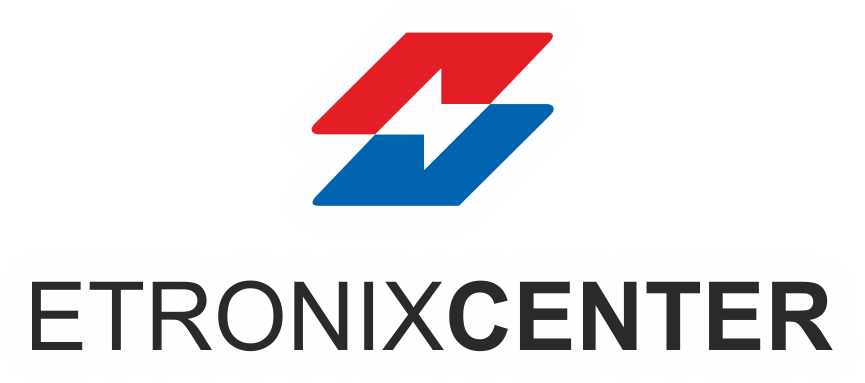
 en
en
 de
de  es
es  fr
fr  it
it  nl
nl  ro
ro 



























 United States.
United States.